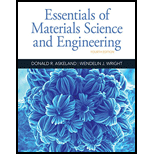
Interpretation:
The surface concentration of
Concept introduction:
The Fick's second law is used to determine the amount of phosphorus and boron at any depth
The expression for the Fick's second law is as follows:
After derivation:
Here,
Answer to Problem 5.56P
Surface concentration for
Surface concentration for
Explanation of Solution
For the n type region:
Here, the constant concentration of diffusing atoms at the surface is
The uniform concentration of diffusing atoms in the material
The concentration of diffusing atoms at location
Time
The diffusion coefficient
Substitute the above values in Fick's equation
Find the value of
| Error function values for Fick's second law | |
| Argument of the error
| Values of the error function
|
|
| |
| | |
| | |
| | |
| | |
| | |
| | |
| | |
| | |
| | |
| | |
| | |
| | |
Hence, Surface concentration for
For the
Here, the constant concentration of diffusing atoms at the surface is
The uniform concentration of diffusing atoms in the material
The concentration of diffusing atoms at location
Time
The diffusion coefficient
Substitute the above value in equation
Find the value of
Hence, surface concentration for
The value of surface concentration for both
Thus, the surface concentration for
Surface concentration for
Want to see more full solutions like this?
Chapter 5 Solutions
Essentials Of Materials Science And Engineering
- Q3) using the following image matrix a- b- 12345 6 7 8 9 10 11 12 13 14 15 1617181920 21 22 23 24 25 Using direct chaotic one dimension method to convert the plain text to stego text (hello ahmed)? Using direct chaotic two-dimension method to convert the plain text to stego text?arrow_forwardIn famished depths, I pine upon my bed,Sweet thoughts of thy most holy meat and breadDrift through my mind like a beauty newlywed,So near yet so far be my true desireThe fridge stands there, nary ten feet away,Yet here I sprawl in lazy disarray,Too tired to move, I fall into dismayMy lust a tempest to my course most dire.O mustard bright! O pickles, crisp and tart!Thy sumptuous flesh a wonder of art!Thick cheddar slices beg my lips to part,Of thy essence never shall I tireNe’er to be surpassed in my inner heartThy taste alone doth lift me higherarrow_forwardUsing the three moment theorem, how was A2 determined?arrow_forward
- Q1: I want his face in the shape of a balloon calculator Gray contains the addition of variables and a second box that shows the result and show it to be the solution of all mathematical equations in the language Python : 1- a a U ah ² (121 ²) + 20 (12132) = 10³² 12μ 12μ Where P P(x, y) is the oil film pressure. 2 ax 2- 3μU (L² P = C²R 4 ε sin (1+ε cos 0)³ 3arrow_forwardDon't use ai to answer I will report you answerarrow_forwardchemical engineering Demonstrate how each specific enthalpy was calculated, from the reference state to the process state. Be thorough to the fullest. This is a material-energy balance. The answers are H(1) = 35.7 KJ/kmol, H(2) = 32.0 KJ/kmol, and H(3) = -1.26 KJ/kmol.arrow_forward
- To find K using Routh criterionarrow_forwardFind the value of voltage Vx using the Thevenin equivalent circuit 7 V ми 8_0 ww 6_ + ¼ ≤ 4 22 MM 3_02 9A 2A ми ми 52arrow_forward##### For the attached electropneumatic circuit, design where and how a counter should be attached so that a part is counted for each cyclearrow_forward
 MATLAB: An Introduction with ApplicationsEngineeringISBN:9781119256830Author:Amos GilatPublisher:John Wiley & Sons Inc
MATLAB: An Introduction with ApplicationsEngineeringISBN:9781119256830Author:Amos GilatPublisher:John Wiley & Sons Inc Essentials Of Materials Science And EngineeringEngineeringISBN:9781337385497Author:WRIGHT, Wendelin J.Publisher:Cengage,
Essentials Of Materials Science And EngineeringEngineeringISBN:9781337385497Author:WRIGHT, Wendelin J.Publisher:Cengage, Industrial Motor ControlEngineeringISBN:9781133691808Author:Stephen HermanPublisher:Cengage Learning
Industrial Motor ControlEngineeringISBN:9781133691808Author:Stephen HermanPublisher:Cengage Learning Basics Of Engineering EconomyEngineeringISBN:9780073376356Author:Leland Blank, Anthony TarquinPublisher:MCGRAW-HILL HIGHER EDUCATION
Basics Of Engineering EconomyEngineeringISBN:9780073376356Author:Leland Blank, Anthony TarquinPublisher:MCGRAW-HILL HIGHER EDUCATION Structural Steel Design (6th Edition)EngineeringISBN:9780134589657Author:Jack C. McCormac, Stephen F. CsernakPublisher:PEARSON
Structural Steel Design (6th Edition)EngineeringISBN:9780134589657Author:Jack C. McCormac, Stephen F. CsernakPublisher:PEARSON Fundamentals of Materials Science and Engineering...EngineeringISBN:9781119175483Author:William D. Callister Jr., David G. RethwischPublisher:WILEY
Fundamentals of Materials Science and Engineering...EngineeringISBN:9781119175483Author:William D. Callister Jr., David G. RethwischPublisher:WILEY





